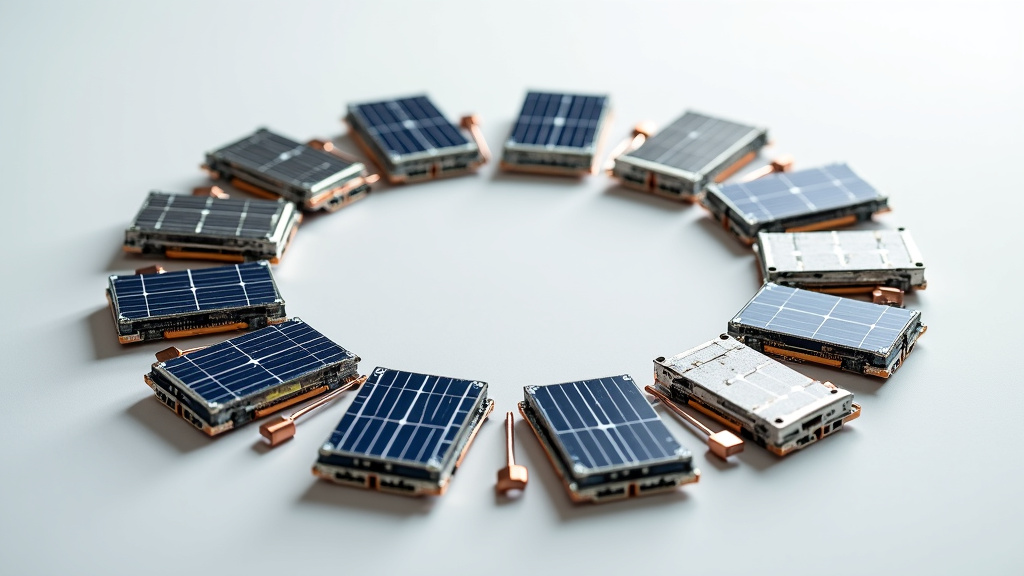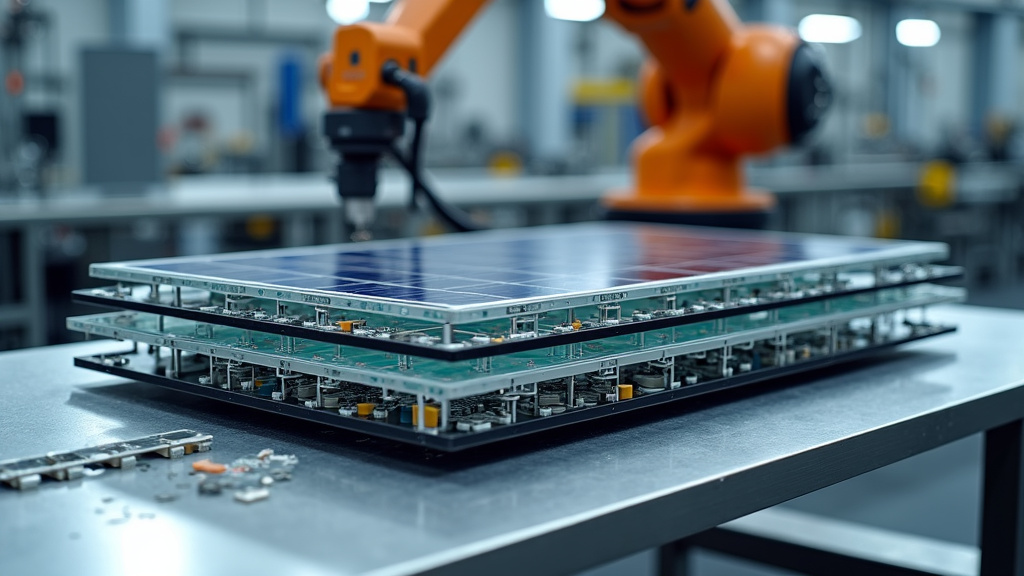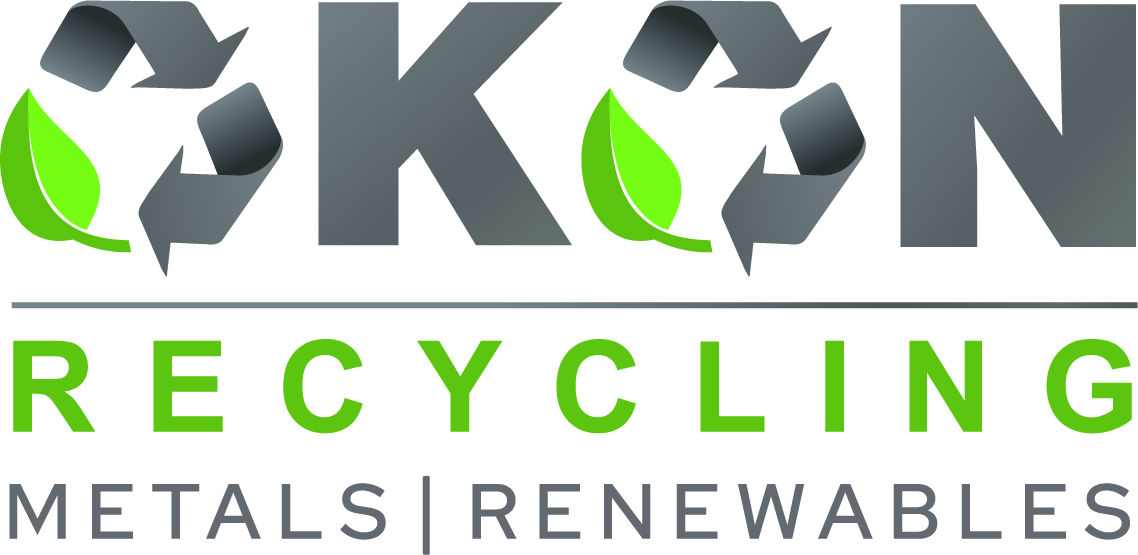5901 Botham Jean Blvd, Dallas, TX 75215
What Are Advanced PV Recycling Techniques?
April 18, 2025Advanced PV recycling techniques represent a significant evolution from traditional methods, incorporating a combination of physical, thermal, and chemical processes to improve the recovery rates of valuable materials from solar panels. These modern approaches aim to address the growing challenge of solar panel waste management as global photovoltaic installations surge past 1 terawatt of capacity.
The scale of this challenge is staggering. With projections indicating that solar panel waste could reach 78 million metric tons globally by 2050, the need for sophisticated recycling solutions has never been more urgent. First-generation solar installations are now reaching their 25-30 year operational threshold, creating an immediate need for effective end-of-life management.
These advanced technologies are revolutionizing how we handle photovoltaic waste, enabling the recovery of up to 95% of valuable materials including silicon, silver, aluminum, and glass. This marks a critical step toward creating a truly sustainable circular economy for the solar industry, where today’s panels become tomorrow’s resources rather than environmental burdens.
How Do Modern PV Recycling Methods Differ from Traditional Approaches?

Traditional photovoltaic (PV) recycling methods relied primarily on mechanical processes with significant limitations. These early approaches focused on recovering only the most accessible components, such as aluminum frames, junction boxes, and glass covers.
Panels would typically be shredded, and the materials sorted through basic mechanical separation techniques. This rudimentary approach resulted in low recovery rates for valuable materials and often produced mixed, lower-quality outputs destined for downcycling rather than reuse in new solar panels.
Modern PV recycling has evolved dramatically, employing a sophisticated combination of physical, thermal, and chemical processes. Today’s methods begin with a similar mechanical disassembly, but quickly diverge with advanced thermal treatments operating at temperatures between 450-500°C. These treatments effectively remove the encapsulant layers, particularly ethylene vinyl acetate (EVA), which traditional methods struggled to separate from valuable components.
The introduction of specialized chemical processes represents another significant advancement in modern recycling. Selective chemical etching with solutions like phosphoric acid, nitric acid, and potassium hydroxide enables the recovery of high-purity silicon wafers and precious metals. These chemical treatments can achieve material recovery rates exceeding 95%, compared to the 70-80% typical of traditional methods.
Perhaps the most innovative advancement is the development of supercritical CO2 delamination. This cutting-edge technique uses supercritical carbon dioxide, sometimes combined with co-solvents like toluene, to separate the layers of PV modules without damaging the valuable components. In a study by Lovato et al. (2021), this method achieved an impressive 96% efficiency in recovering highly purified glass, back sheets, and metallic filaments, while also reclaiming more than 85% of valuable materials like silver and silicon.
Another notable modern innovation is the hot knife technology, which provides a more precise approach to separating glass from the back sheet during delamination. This automated process allows for careful extraction of components that can then be further processed to recover valuable materials like silver and copper, with minimal damage to reusable elements.
Modern recycling facilities also employ advanced sorting technologies that were absent in traditional approaches. Technologies such as eddy current separation, optical sorting, and specialized vibration screening enable more effective segregation of materials. Some cutting-edge facilities now incorporate hydrometallurgical and electrowinning processes to extract and purify metals to levels exceeding 99% purity.
The environmental impact of recycling processes has also been addressed in modern approaches. Traditional methods often resulted in harmful emissions and used toxic chemicals with minimal containment. Today’s processes are designed with environmental considerations at the forefront, often incorporating closed-loop systems that reduce emissions and waste while recycling chemical solutions where possible.
These technological advancements have transformed solar panel recycling from a basic waste management activity to a sophisticated resource recovery operation. Modern facilities can now extract high-value materials that meet the standards for reuse in new solar panel manufacturing, creating a more circular economy for the solar industry.
What are the Key Components of Advanced PV Recycling Processes?
Advanced PV recycling processes typically involve three main components: mechanical, chemical, and thermal treatments. Each component plays a vital role in the efficient recovery of materials from end-of-life solar panels. Let’s examine how these processes work together to maximize material reclamation.
Mechanical Separation: The Foundation of Recycling
Mechanical separation forms the initial and critical first step in the recycling journey. This process begins with the manual dismantling of easily removable components such as aluminum frames and junction boxes. These components are valuable and can be directly recycled without complex processing.
Once the accessible parts are removed, the remaining laminated structure undergoes controlled crushing and shredding. This step breaks down the module into smaller fragments, preparing materials for further sorting and separation. The effectiveness of this stage significantly impacts downstream processes.
The resulting material mixture is then sorted using various mechanical techniques including sieving, air separation, and magnetic separation. Sieving separates materials based on particle size, while air separation uses air currents to sort materials by density. Magnetic separation effectively removes ferrous metals from the waste stream. Together, these sorting techniques create distinct material streams for further processing.
Thermal Treatments: Breaking Down Polymer Bonds
Thermal treatments tackle one of the most challenging aspects of PV recycling—separating the encapsulant polymer that binds solar cells to glass. This process typically involves heating materials to temperatures exceeding 500°C, which effectively decomposes the polymer layer, particularly challenging materials like polyolefin elastomer (POE) or ethylene-vinyl acetate (EVA).
When subjected to these high temperatures, the polymer materials either melt or transform into volatile compounds, leaving behind clean glass, intact solar cells, and metal components. Research indicates that thermal treatment at 500°C for approximately one hour in an air atmosphere can achieve near-complete removal of encapsulant polymers, allowing efficient separation of valuable materials.
The thermal approach offers several advantages over purely mechanical methods, particularly in achieving higher purity of recovered materials. However, it does require careful control of processing conditions to minimize environmental impacts and energy consumption.
Chemical Processes: Extracting High-Value Materials
Chemical treatments represent the final and most sophisticated stage in advanced recycling systems. These processes employ various solvents, chemical baths, and extraction techniques to isolate and purify specific high-value materials from the pre-processed components.
For example, glycerol has shown promise as an effective solvent for separating glass from multi-material laminates in certain PV modules. Other chemical processes target the recovery of valuable metals like silver, copper, and semiconductor materials from solar cells. These treatments can achieve high purity levels essential for reusing these materials in new products.
The chemical approach is particularly important for recovering critical materials that cannot be effectively separated through mechanical or thermal means alone. However, these processes must be carefully designed to minimize the use of hazardous substances and reduce environmental impacts.
The integration of these three treatment approaches—mechanical, thermal, and chemical—creates a comprehensive recycling system capable of recovering up to 95% of materials from end-of-life PV modules. Each component addresses specific challenges in the recycling process, together forming the foundation of advanced PV recycling technologies.
Recent advances in recycling technology have focused on optimizing these processes to improve recovery rates while reducing energy consumption and environmental impacts. Commercial-scale recyclers like Veolia/PV CYCLE have implemented integrated systems that can process modules in as little as 1-1.5 minutes per unit, highlighting the potential for efficient large-scale recycling operations.
As the volume of decommissioned solar panels continues to grow, these advanced recycling processes will play an increasingly important role in recovering valuable materials and supporting the sustainability of the solar energy industry.
What Innovative Projects are Advancing PV Recycling Technology?

The EU-funded PHOTORAMA project stands at the forefront of solar panel recycling innovation, developing multi-step processes that go well beyond conventional crushing methods. This ambitious initiative aims to create a truly circular model within the photovoltaic value chain, with particular attention to c-Si and CI(G)S PV technologies that present complex recycling challenges due to their layered structure.
PHOTORAMA’s approach is methodical and comprehensive, involving three critical steps. First, they automatically disassemble the external components of panels. Second, they separate the multilayered sandwich structure. Finally, they implement specialized recovery techniques to extract critical and valuable materials from solar cells, including silicon, copper, silver, indium, and gallium—materials that would otherwise be lost in traditional recycling methods.
What makes PHOTORAMA particularly innovative is its adaptability to diverse panel types. With over 150,000 different PV panel models in existence, the team has designed flexible systems capable of handling this variation while maintaining high throughput. Their pilot demonstrations across Europe show promising results for commercial development, with several technologies already advancing from laboratory experiments to full-scale machinery.
Commercial Ventures Transforming the Recycling Landscape
Beyond academic and EU-funded projects, commercial companies are making significant strides in PV recycling technology.
These companies are addressing the challenge of efficient material recovery through innovative methods. Rather than treating solar panels as waste, they view them as valuable material repositories. For instance, advanced chemical extraction techniques now allow for the isolation of silver from solar cells without damaging the surrounding materials, representing a significant advancement over previous methods.
The economic potential of these recycling innovations is substantial. According to research from Rystad Energy, recyclable materials from solar panels could be worth more than $2.7 billion by 2030, driving further investment in advanced recycling technologies. This economic incentive is pushing companies to develop increasingly sophisticated and efficient recovery processes.
Research Breakthroughs Expanding Recovery Possibilities
Academic institutions are contributing critical research to advance PV recycling capabilities. At Arizona State University, researchers have developed a chemical process to efficiently extract silver and silicon from end-of-life solar panels. This project, supported by the Department of Energy, shows promise for scaling to commercial applications.
Australian researchers have pioneered a method to transform recovered silicon into nano-silicon for use in lithium-ion batteries—creating a valuable second life for this material as high-energy anodes. This innovation demonstrates how recycling can support adjacent clean energy technologies, multiplying the environmental benefits.
European research is also yielding promising results, including new delamination processes that could allow glass to be removed in one piece and potentially reused directly in new PV modules. Another initiative, the ReProSolar project, is establishing pilot facilities that use mild chemical bases to separate valuable metals while preserving material integrity.
The convergence of these research breakthroughs with commercial implementations is creating a robust ecosystem of PV recycling innovation. As the first large wave of solar installations reaches end-of-life, these technologies are positioned to transform what could be a waste management challenge into a valuable material recovery opportunity.
What are the Future Prospects and Challenges for Advanced PV Recycling?
The future of advanced photovoltaic (PV) recycling presents a complex landscape of significant opportunities alongside substantial challenges. Projections from industry experts indicate that by 2050, cumulative PV waste could range from 2 to 3 million tonnes globally, with IRENA estimating as much as 78 million metric tons of panels reaching the end of their useful lives. These figures underscore the urgent need for efficient recycling solutions as the solar industry continues its rapid growth trajectory.
Advanced recycling techniques have made impressive strides, now capable of recovering up to 95% of materials from decommissioned solar panels. This technological progress represents a critical step toward establishing a true circular economy in the solar sector. The economic potential is substantial as well – IRENA estimates the market value of materials recovered from recycled panels could reach $15-30 billion by 2050, creating new revenue streams and supporting resource conservation.
Economic and Technical Challenges
Despite these promising developments, the economics of PV recycling remain challenging. Current recycling costs range from $15 to $30 per module, often exceeding the value of recovered materials. This cost-benefit imbalance discourages investment in recycling infrastructure and creates a significant barrier to widespread adoption of advanced recycling techniques.
Technical complexity presents another substantial hurdle. Different panel types – monocrystalline, polycrystalline, and thin-film – require specialized recycling approaches. Emerging technologies like bifacial and perovskite panels introduce additional complexities due to their unique designs and material compositions. Thin-film panels pose particular challenges because they contain potentially hazardous materials that require careful handling and specialized recovery processes.
Logistical and Regulatory Frameworks
Collection and transportation of end-of-life panels present significant logistical challenges. The geographically dispersed nature of solar installations makes establishing efficient collection systems difficult and costly. Some manufacturers are exploring innovative solutions, such as mobile recycling units that could process panels on-site at power plants, potentially reducing high transportation costs and associated emissions.
The regulatory landscape remains inconsistent globally, creating uncertainty for industry stakeholders. While the European Union leads with its Waste Electrical and Electronic Equipment (WEEE) Directive, which mandates recycling responsibilities for solar panel producers, many regions lack comprehensive frameworks. In the United States, only a few states like California and Washington have introduced extended producer responsibility laws, while federal standards remain absent.
Future Directions and Innovations
Despite these challenges, ongoing research and development efforts show promise for advancing PV recycling. Design for recyclability is gaining momentum, with manufacturers incorporating modular designs and more environmentally friendly materials to facilitate future recycling. Public-private partnerships are driving innovation in recycling technologies and establishing best practices.
Advanced technologies under development include AI-driven systems for more efficient sorting and disassembly, thermal decomposition methods for improved material recovery, and chemical leaching techniques. These innovations aim to increase recovery rates while reducing processing costs, potentially transforming the economics of PV recycling.
International collaboration through organizations like the International Electrotechnical Commission is working to harmonize global recycling standards, while platforms such as the Solar Waste Reduction Initiative promote knowledge sharing across borders. These collaborative efforts are essential for establishing a coordinated global approach to managing the growing volume of end-of-life solar panels.
As the solar industry continues its rapid expansion, developing efficient, economically viable recycling systems will be crucial for capturing the environmental and economic benefits of recovered materials while supporting the transition to a truly sustainable energy future.
Conclusion: The Path Forward for Advanced PV Recycling

Advanced PV recycling techniques stand at the forefront of creating a truly sustainable solar industry. As global photovoltaic installations surge past 1 terawatt of capacity, these innovations address the critical challenge of managing end-of-life panels while recovering up to 95% of valuable materials.
From hydrothermal processes that utilize high-pressure water to emerging technologies like supercritical CO2 delamination and selective chemical etching, these methods are transforming what was once considered waste into valuable resources worth potentially $15 billion by 2050.
The circular economy approach in solar panel recycling isn’t merely about waste reduction—it represents an opportunity to manufacture 2 billion new panels from recovered materials, equivalent to 630 gigawatts of clean energy capacity. For the solar industry to fulfill its promise as a truly renewable energy source, continued innovation, supportive regulations, and collaborative efforts among manufacturers, installers, and recyclers are essential to close the materials loop and ensure the long-term sustainability of this vital technology.
Contact Okon Recycling at 214-717-4083 for guidance on implementing sustainable end-of-life solutions for your solar panels.
